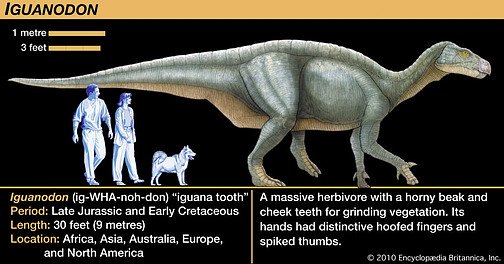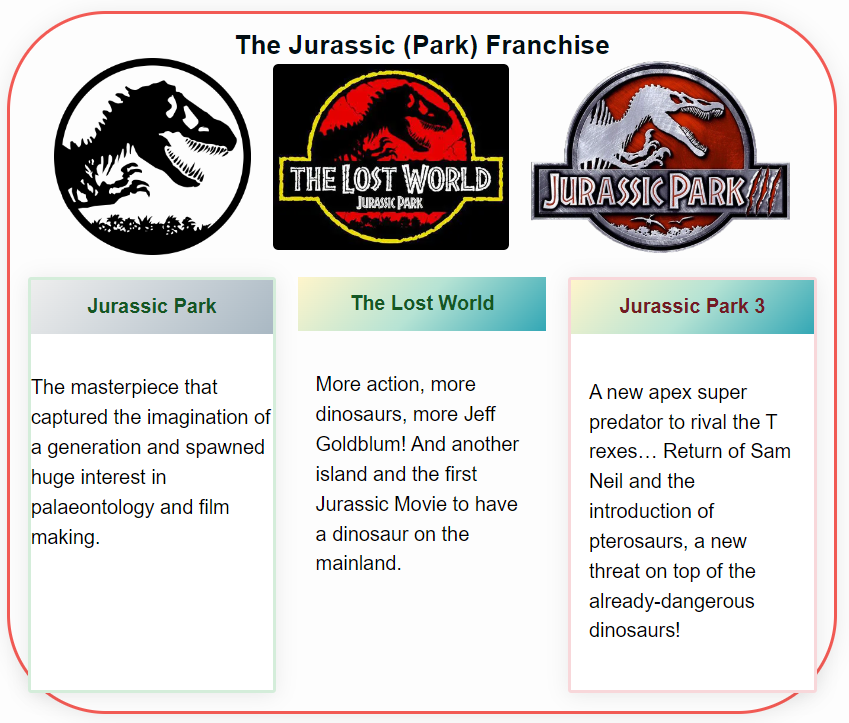This is one of my all-time favourite species of dinosaur. This could be due to watching Disney’s Dinosaur when I was young, and the fact that they would have lived where I live, here in the UK.

Iguanodon was a genus of herbivorous dinosaur that lived during the early Cretaceous period, approximately 140 to 120 million years ago.
They were one of the first dinosaurs to be scientifically described, with the first fossil discoveries occurring in the early 19th century. More on this later!
Where did Iguanodon Live?
Iguanodon fossils have been found all over the world, from Europe to North America to Asia. They are believed to have lived in a variety of environments, including forests, swamps, and floodplains.
What Predators Preyed on Iguanodon?
As a herbivorous dinosaur, Iguanodon’s main predators were likely large carnivorous theropods such as Allosaurus and Acrocanthosaurus. In addition, smaller predators such as Velociraptor may have preyed on young or injured individuals.
Iguanodon’s Skeleton, Skull, and ThoseThumb Spikes
Iguanodon had a unique skeletal structure that set it apart from other dinosaurs. Its most distinctive feature was its thumb spike, a sharp, conical projection on each hand that was likely used for defense against predators.
In addition to its thumb spikes, Iguanodon also had a large, bulky skull with powerful jaws and numerous teeth that were used to grind tough vegetation. Its skull was also notable for its long, narrow snout, which may have been adapted for feeding on low-growing plants.
Iguanodon’s skeleton was also remarkable for its bipedal stance, with the dinosaur walking on two powerful hind legs that were adapted for running and jumping. Its forelimbs were shorter and less muscular, but still strong enough to be used for grasping and pulling down branches for feeding.
What was Iguanodon’s Habitat and Diet?
As a herbivorous dinosaur, Iguanodon’s diet consisted mainly of tough vegetation such as ferns and cycads. Its powerful jaws and teeth were adapted for grinding and processing this tough plant material, making it a highly effective herbivore.
Iguanodon is believed to have lived in a variety of habitats, including forests, swamps, and floodplains. Its ability to walk on two legs likely allowed it to navigate through dense vegetation and move quickly across open terrain.
In conclusion, Iguanodon was a unique and highly adapted herbivorous dinosaur that bridged the gap between the late Jurassic and early Cretaceous period.
Its skeletal structure, including its thumb spikes and powerful jaws, made it well-suited for its herbivorous diet, while its bipedal stance allowed it to move quickly and efficiently through a variety of environments. Despite the numerous predators that may have preyed upon it, Iguanodon was a highly successful dinosaur that thrived for millions of years before ultimately going extinct.
History of Iguanodon and Our Understanding of Dinosaurs.
Iguanodon was first discovered in 1822 by a physician and fossil collector named Gideon Mantell in Sussex, England. At the time, Mantell thought that he had found the tooth of a large, unknown reptile (hence the name), but further investigation led him to realize that the tooth actually belonged to a herbivorous dinosaur.
Although we can now see that the Iguanodon was a medium sized herbivore by dinosaur standards, it was a huge find at the time. It was probably unimaginable to think of a reptile that stood as tall, or taller, than modern herbivorous mammals…
Iguanodon was actually the second species of dinosaur to be found, the very first one being the meat eating Megalosaurus!
The discovery of Iguanodon played a crucial role in the early development of paleontology, as it was one of the first dinosaurs to be scientifically described. It also helped to establish the idea that reptiles and dinosaurs were related, as Iguanodon’s anatomy showed clear similarities to both groups.
One of the key features that linked Iguanodon to reptiles was its teeth.
Like reptiles, Iguanodon had teeth that were continuously replaced throughout its lifetime. In addition, its teeth were shaped like the teeth of modern reptiles, with a curved, serrated edge that was ideal for cutting and tearing vegetation.
Despite these reptilian features, however, Iguanodon was clearly a dinosaur, with numerous adaptations that set it apart from other reptiles. For example, its bipedal stance and powerful hind legs were unique adaptations for running and jumping that were not seen in any reptile.
In the cold-blooded/warm blooded debate, the classic dinosaur stance plays a key role in my mind, since it would require the energy output of a warm blooded creature to stay upright and move like dinosaurs would have moved based on skeletons and footprints, not to mention modern birds are warm blooded and this isn’t a new feature they evolved recently…
Overall, the discovery of Iguanodon played a pivotal role in the early development of paleontology and helped to establish the idea that dinosaurs were a unique group of reptiles with their own distinct adaptations and characteristics.
Iguanodon in Pop Culture and Media
Jurassic Park
Iguanodon are featured in the latest Jurassic Park movie, Jurassic World: Dominion in both the prelude at the start and then in Biosyn Valley in the Italian mountain range where the genetics company cloned prehistoric animals and seemed to lump them with the classic Jurassic Park/World dinosaurs in one valley and hoped for the best.
They don’t play a major role in the movie but Iguanodon do make a dinosaur species to throw in for some variety, you just need to ignore that most of the species interacting at this point wouldn’t have existed at the same time or place, but it makes for good entertainment nonetheless.
Disney’s Dinosaur
In this movie, Iguanodons play major roles.
The main character is an Iguanodon called Aladar who starts life being adopted by a prehistoric lemur-like species of mammals after his egg ends up on a trip after an attack on his nest by a Carnotaurus – these are the main villain of the movie.
After a meteor strike causes catastrophe the lemur colony and now-adult Iguanodon Aladar end up crossing desert wasteland and joining a mixed-species herd which happens to be led by some miltant fellow Iguanodons. I won’t spoil the movie but even considering it was released in the year 2000, it still holds up and is a great movie for kids and families.
Disney’s Dinosaur can be found here on Disney Plus or online on DVD.
Walking With Dinosaurs
In 1999, the BBC released Walking with Dinosaurs. At the time, it was groundbreaking and a breath of fresh air for dinosaur fans as it showed dinosaurs as animals in their natural habitat, as realistic as it could be at the time.
I believe the Iguanodon in Walking with Dinosaurs has since been reclassified as Dakotadon, meaning Iguanodon is back to being a European species of dinosaur.
Iguanodons also feature in many video games from Ark: Survival Evolved to Jurassic World Evolution 1 & 2.


